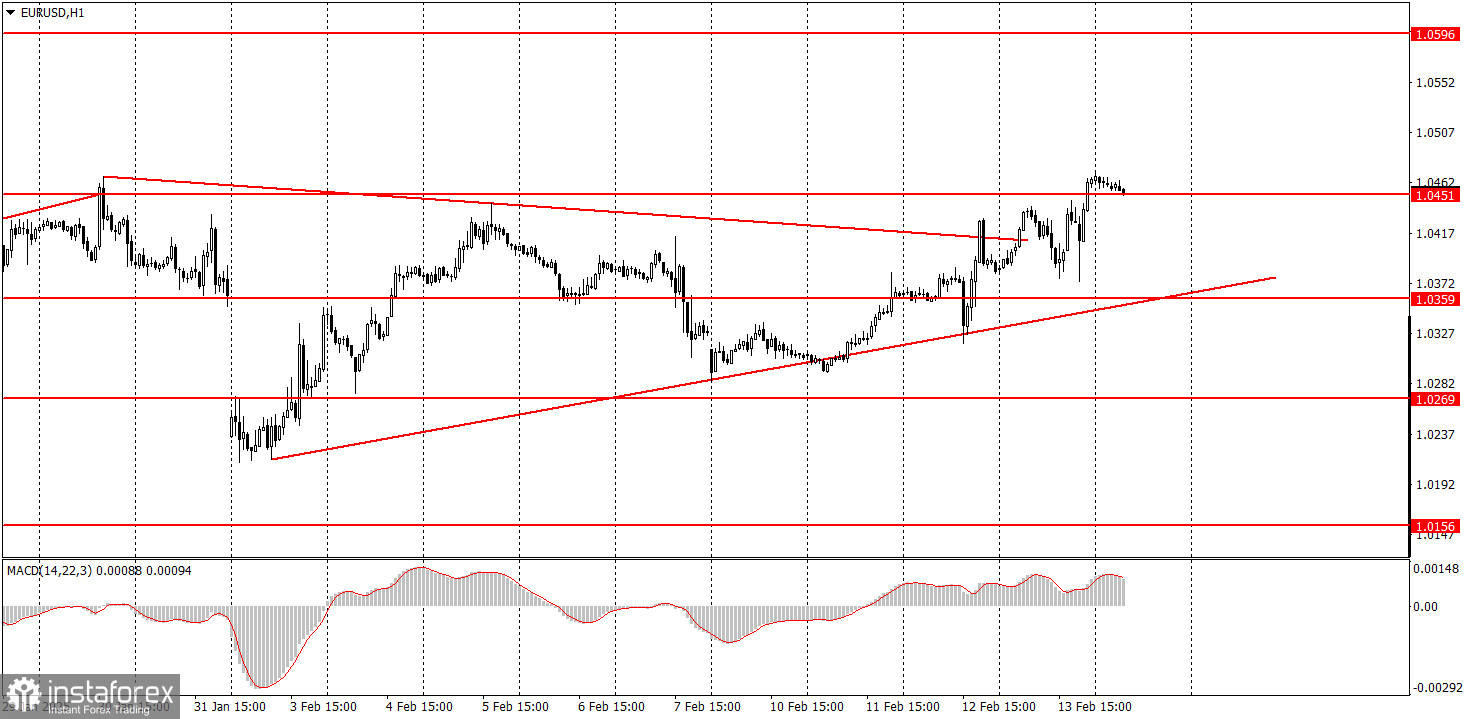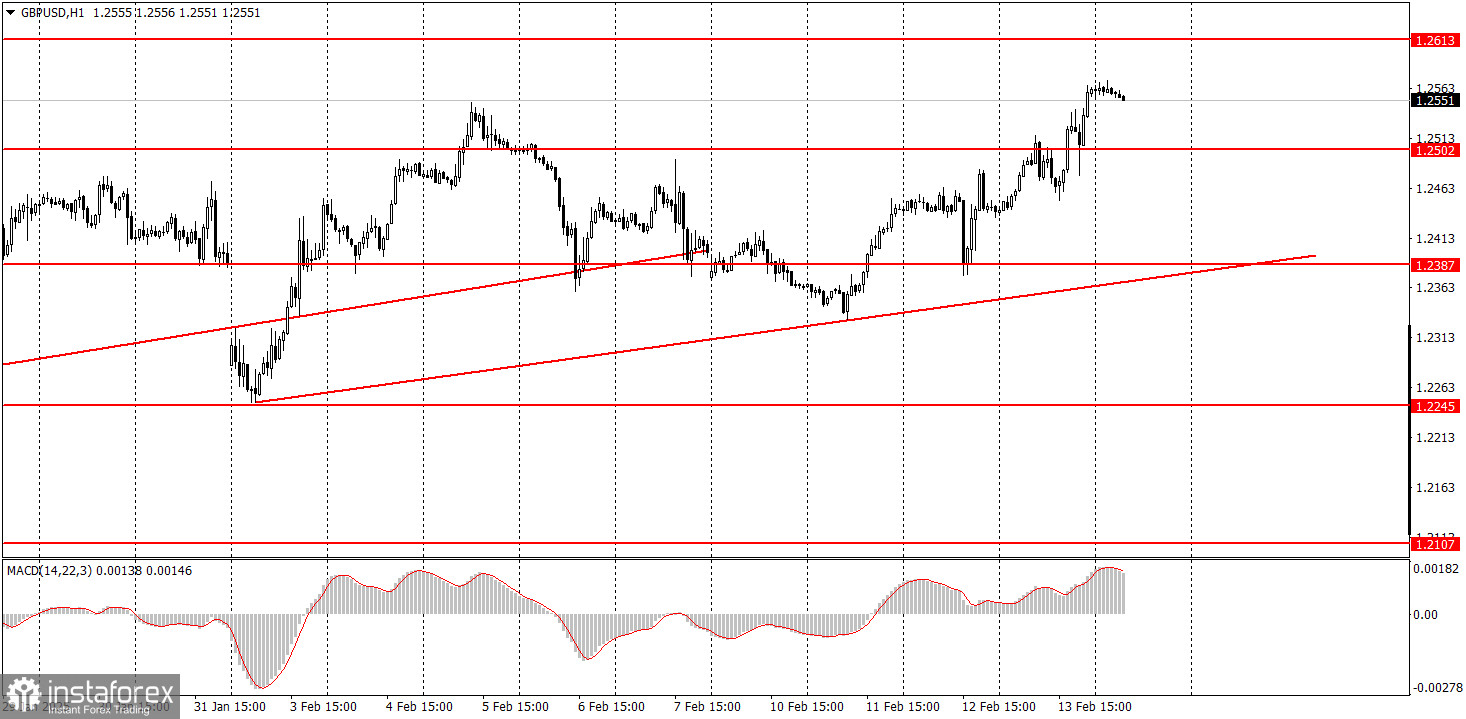Analysis of Macroeconomic Reports:

Friday's macroeconomic events are neither too numerous nor too few. The Eurozone will release its second GDP estimate for the fourth quarter, which is objectively less significant than the first or third estimates. As a result, a strong market reaction to this report is unlikely. In Germany and the UK, there are no notable releases today. In the U.S., reports on industrial production and retail sales will be published; both are relatively important, but an exceptionally strong market response is also not expected. Both currency pairs continue their upward trend, but frequent pullbacks are occurring. It is likely that today will be no exception.
Analysis of Fundamental Events:

There are no significant fundamental events taking place on Friday, as there are no scheduled speeches from central bank representatives. However, at this point, traders may not require them. The positions of the European Central Bank, Bank of England, and Federal Reserve are quite clear and are unlikely to change in the near future. The euro and the pound continue to rise, correcting upwards by approximately 80% due to technical factors. We expect this correction to last for another month before anticipating a resumption of the downtrend, which is clearly visible on the daily timeframe.
General Conclusions:
On the last trading day of the week, market movements could be entirely unpredictable. The market remains chaotic, making it unwise to expect logical movements. The euro and the pound have been predominantly rising for three consecutive days, but today they could easily start to decline. Corrections are always complex structures, often marked by frequent pullbacks and internal retracements.
Key Rules for the Trading System:
- Signal Strength: The shorter the time it takes for a signal to form (a rebound or breakout), the stronger the signal.
- False Signals: If two or more trades near a level result in false signals, subsequent signals from that level should be ignored.
- Flat Markets: In flat conditions, pairs may generate many false signals or none at all. It's better to stop trading at the first signs of a flat market.
- Trading Hours: Open trades between the start of the European session and the middle of the US session, then manually close all trades.
- MACD Signals: On the hourly timeframe, trade MACD signals only during periods of good volatility and a clear trend confirmed by trendlines or trend channels.
- Close Levels: If two levels are too close (5–20 pips apart), treat them as a support or resistance zone.
- Stop Loss: Set a Stop Loss to breakeven after the price moves 15–20 pips in the desired direction.
Key Chart Elements:
Support and Resistance Levels: These are target levels for opening or closing positions and can also serve as points for placing Take Profit orders.
Red Lines: Channels or trendlines indicating the current trend and the preferred direction for trading.
MACD Indicator (14,22,3): A histogram and signal line used as a supplementary source of trading signals.
Important speeches and reports, which are consistently featured in the news calendar, can significantly influence the movement of a currency pair. Therefore, during their release, it is advisable to trade with caution or consider exiting the market to avoid potential sharp price reversals against the prior trend.
Beginners in the Forex market should understand that not every transaction will be profitable. Developing a clear trading strategy and practicing effective money management are crucial for achieving long-term success in trading.





















